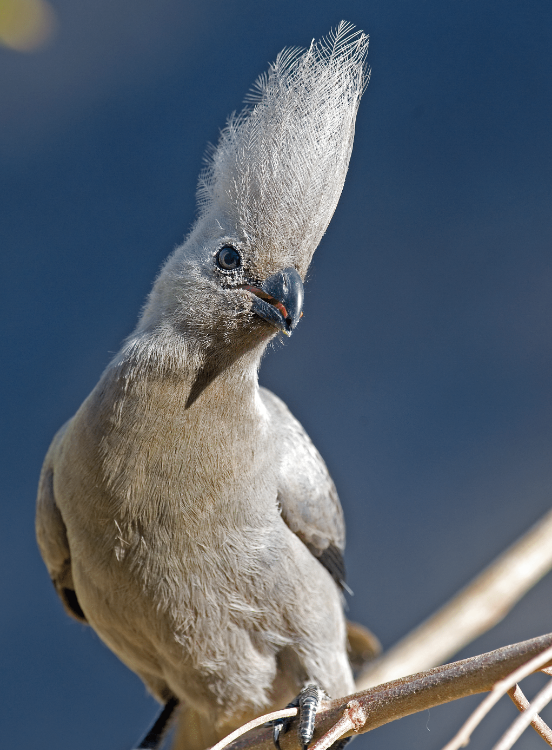Windhoek: Villa Violet wows at open day
September 12, 2012Kunene Campsite Journal
September 12, 2012Pale chanting goshawk
Melierax canorus
Roberts’ No 162
by Pompie Burger
Would you expect a bird that hunts with a honey badger and dances in the rain to fight over territory with its own species until death? Not only is the pale chanting goshawk one of Namibia’s most common raptors, both in number and in distribution. It also seems to be one of the more interesting raptors around.
Although PCGs are opportunistic hunters, they do have a very interesting way of hunting. According to ornithologist, W Tarboton, it is a well-known phenomenon that they habitually follow a honey badger, foraging at a safe distance, sometimes following it on foot or hovering in the air behind it. If a gerbil or mouse is flushed out, the goshawk is on it in a trice. I was fortunate enough to witness this phenomenon twice, both times in the Etosha National Park.
On another occasion we saw a PCG performing what seemed to be a ‘rain dance’ during a rainstorm. According to Dr Chris Brown of the Namibia Nature Foundation this is a typical behaviour pattern of some raptors. They are actually trying to clean their wings and feathers. The most interesting incident was when we came across two PCGs lying on the ground clutched to each other, the one dead, the other very much alive. When I climbed out of the car to release them, the latter flew off. On closer inspection the dead one did not seem to have any wounds. This is apparently the result of a mid-air territorial fight between the two birds, which probably ended with a crash landing and one dead PCG.
The Melie part of this goshawk’s generic name means melodious chanting or call, with canoris meaning basically the same, while rax is Latin for hawk. To be quite honest, I’ve never heard a PCG call, but apparently their call is quite melodious. They usually hunt from a perch, gliding down to the prey and then often pursuing it on foot if necessary. Their diet consists of lizards, insects, small birds, snakes and often carrion.
In Namibia when you come across a raptor sitting on a telephone pole, you will probably be correct in saying it’s a PCG in over 90% of cases, except in the Caprivi where the PCGs have been replaced by Dark chanting goshawks.
About the author:
Based in Windhoek, Pompie Burger is an orthopaedic surgeon whose part-time passion is photography, in particular wildlife, and specifically birds. This regularly takes him to the most remote corners of the country, resulting in riveting images and articles.
Pompie is the author and photographer of the coffee table book Birds of Namibia, which was published in 2008. The book contains articles and photographs which attest to the insight and knowledge of an accomplished observer.
Read more of his articles in our Birding Section.
This article appeared in the Oct/Nov ‘04 edition of Travel News Namibia.


